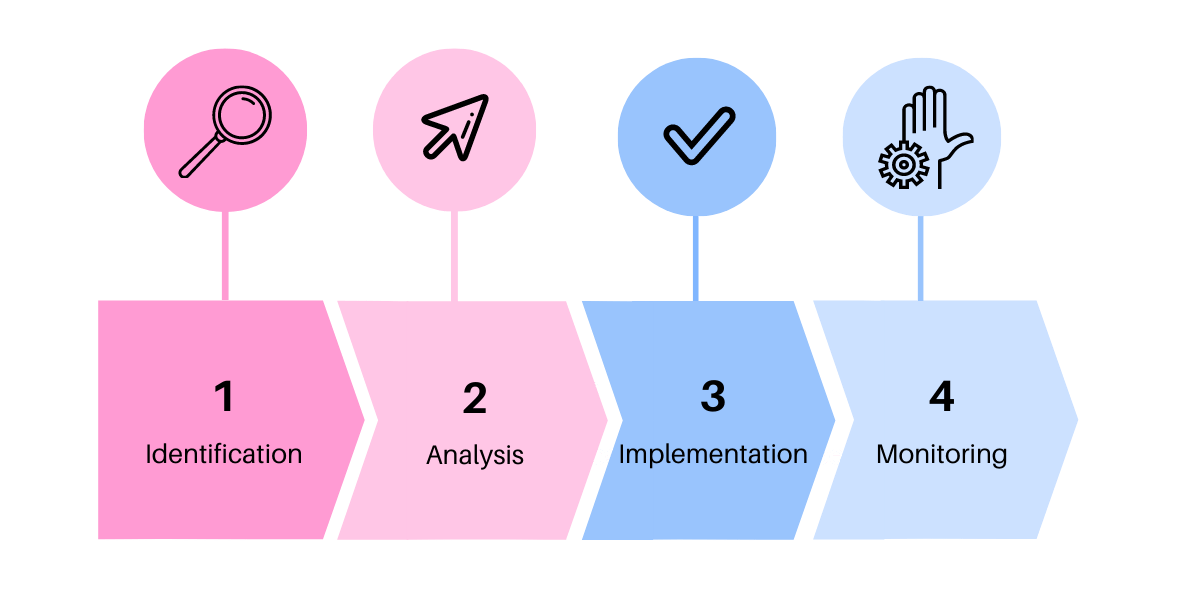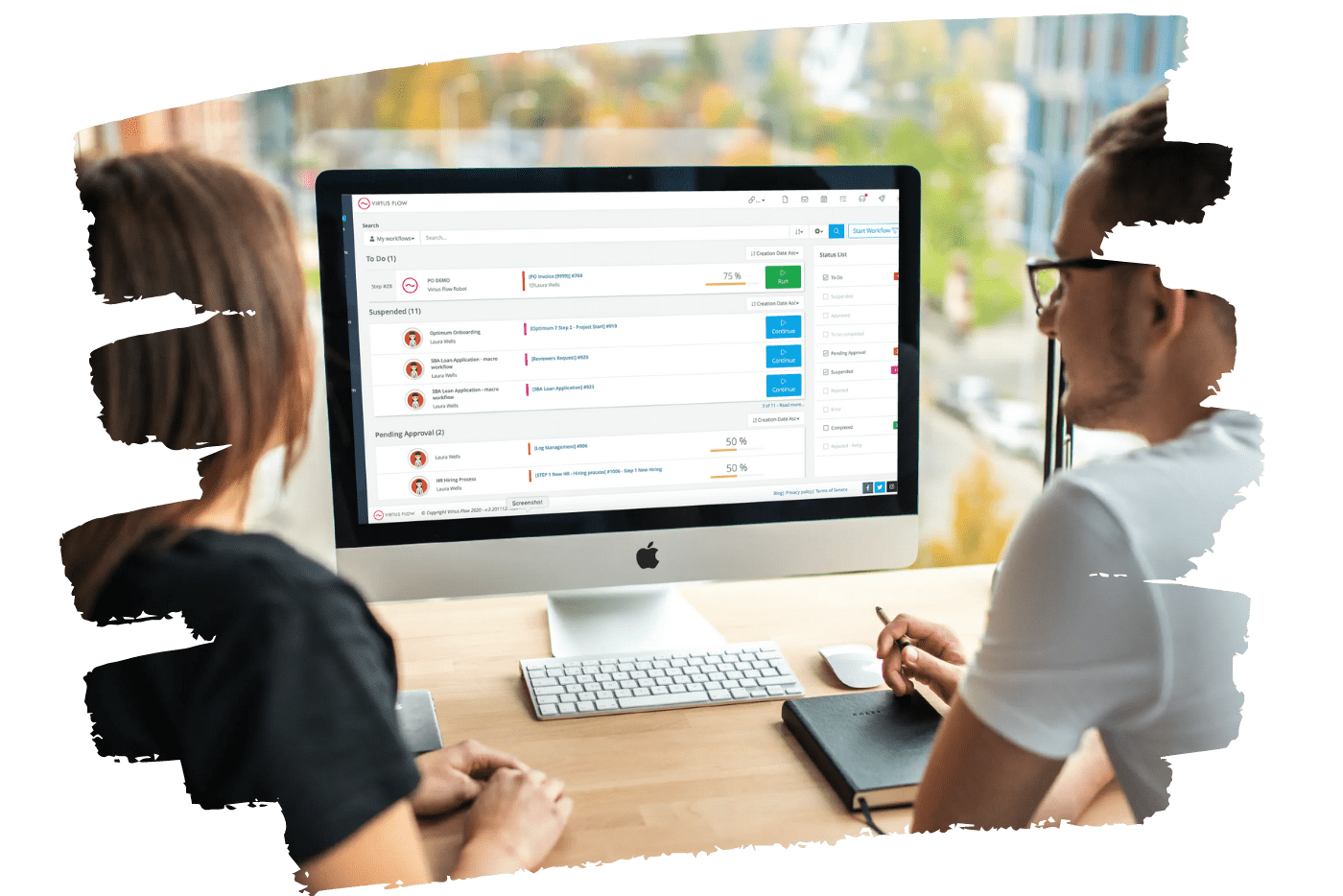“And how to find the solution that best fits your needs”.
A key portion of business management is ensuring that internal processes are running smoothly, and as efficiently as possible. As a way to streamline these optimization efforts, the concept of Business Process Optimization has been introduced. Here’s what that means.
What is Business Process Optimization?
Business Process Optimization is the discipline of adjusting a process to optimize some specified set of parameters without violating some constraint.
Decision-makers often utilize process optimization as a way to minimize costs, maximize outcomes and ensure the best possible use of resources. You can learn more about business process optimization here.
How will Business Process Optimization help your business?
Did you know that process inefficiencies can cost your organization as much as 30% of your revenue? Even worse, compliance errors can cost as much as 46% of your revenue, making it so much more important to focus on operations running smoothly.
No matter how big or small a company is, Business Process Optimization can help managers identify and solve poor time management, inadequate allocation of resources, unnecessary errors, lack of or deficient collaboration, and siloed processes that are preventing revenue from reaching its full potential.
Automation plays a key role in any process optimization. To explain more in detail, here we analyze how three important areas benefit from it.
1- Finance
The finance department is often receiving requests for purchase, vendor approvals, and managing funds. All these processes are beyond relevant to your organization and must be done with the highest attention to detail to prevent manual errors and costly mistakes.
Your finance department will benefit from one-click approvals, easily customizable workflow automation, and a unified solution for all processes.
To learn about how to Improve Finance processes with Workflow Automation click here!


2- Human Resources
From developing effective onboarding processes to administrative tasks, the Human Resources team heavily relies on the best possible level of organization and transparency at your company.
Through Business Process Optimization, you can streamline the workflows by identifying areas that could be automated, better forecasting changes, and eliminating redundancies.
To learn how to optimize your Employee Onboarding process click here!
3- Sales
When it comes to sales, efficiency translates into more sales and increased revenue for the business. This is why empowering your team with the right business process optimization solution is one of the most important decisions you can make for your company.
By doing this you will shorten your sales cycle and open the doors to productivity and revenue gains.
To learn how to put in place a frictionless Customer Onboarding Process read here!

How to optimize a process
You now know the many benefits of Business Process Management (BPM) and how optimization works so it’s time to get started — but how?
Even though every organization is unique, there are usually four steps to follow:

1. Identify Problems
Focus on the area or department that you want to optimize and gather all the information you can to identify the problem. Are the sales representatives not meeting deadlines? Is your Human Resources department struggling to hire the right employees? Make sure to interview stakeholders, review the current processes, and develop a process mapping strategy that helps you find the gaps.
2. Analyze Data
Once you have gathered the necessary information to know where the problem areas are, it’s time to analyze the data. Were the goals clearly defined at the beginning of the project? Are the right resources being allocated? The more in-depth you go, the easier it will be to determine a solution.
3. Implement Changes
Implementing changes is the fun part, yet it can also be the most challenging one. If you’re working with a third-party company to support automation, this is when they’ll come in and help you start optimizing processes.
4. Monitor Performance
To determine the effectiveness of your process improvement, define a relevant period to define and look at key performance indicators (KPI) and continue to reshape the workflow until the desired outcome is achieved.
Process Optimization Features to Look at in 2021
» Low code or no coding required: Applications that come ready-to-use will only save you time and resources. A good idea is to go with a solution that requires little to no code but a high level of customization for your team.
» Cloud-based hosting: Even though many companies still offer on-premise hosting, cloud-based solutions allow you to access data from anywhere, on any divide at any time. A solution that offers multiple hosting options would be ideal if you’re not sure what your company needs.
» User-friendly dashboards: Easy-to-read dashboards increase transparency and ensure that all your team members have access to the same information in real-time. When booking a demo, ask to see their dashboards and find out how hard it is to customize them with the metrics that you require.
» Software integration: Platforms that integrate with your CRM, Mailbox, ERP and other management solutions you are using will only make your life easier.
» Automation: This feature focuses on simplicity, speed, accessibility, and ease of use. Isn’t that what every organization is going after? Remember that a solution that doesn’t offer automation will only help you optimize your processes to a certain extent. To get the full benefit, look to automate processes end to end.
Always remember though, that without the proper process optimization, automation will offer limited benefits. Make sure your bring onboard not only the best solution but the best partner.
OTHER TOPICS YOU MAY BE INTERESTED IN:
Essential Guide to Business Process Analysis
Understanding Process Optimization Technology
Digital Process Automation (DPA) vs. Robotic Process Automation (RPA)
Digital Process Automation and Robotic Process Automation are the most used process automation technology. In simple terms, DPA is the practice of automating business processes and data management under a unified umbrella of integration. For example the workflows that are part of bringing a new vendor onboard, or requesting your purchasing department to buy a new solution for you.
To learn more about DPA read this article.
RPA, on the other hand, uses programmed software (like a bot or robot) to handle repetitive tasks. For example to reconcile bank transactions, to copy information from one system to another, etc.
To learn more about RPA click here or visit this page to learn about the differences between DPA and RPA.
When to use DPA?
To understand if DPA is the right technology for your project, you should ask yourself these questions:
» Do I want to automate a process end-to-end or only partially?
» Do I need human intervention for decision-making?
» Do I want to improve the user experience and provide consistent service?
» Am I looking to reduce training sessions?
» Are critical processes involved and human errors are recurrent?
» Do I need to automate processes that require me to follow specific checklists or steps?
If you answered positively to multiple of these questions, DPA may be the right approach to automation.
When to use RPA?
Conversely, if you think RPA is right for you, ask yourself:
» Does a human worker perform the task more than twice per week?
» Can the task be completed manually by a human using multiple applications?
» Does the system lack an API or is too expensive to integrate?
» Do you need to invest a lot of money to integrate or upgrade the actual system?
» Does the task need to be completed quickly with limited staffing resources?
» Do employees dislike performing this task?
If you answered yes to most of these questions, RPA may be the right solution to automate your processes.
IMPORTANT: The use of these two technology are complementary. If you have implemented one you may still need the other. Some processes could be automated with any of these technology, but a large number would call for one or the other. To take full advantage of automation technology, streamline processes end to end.
Optimize your business processes and automate them!
Learn how to digitize and automate tasks, processes, approval workflows, information sharing, work assignment and so much more. Improve the way you and your team work. Our team will guide you through the whole process.





